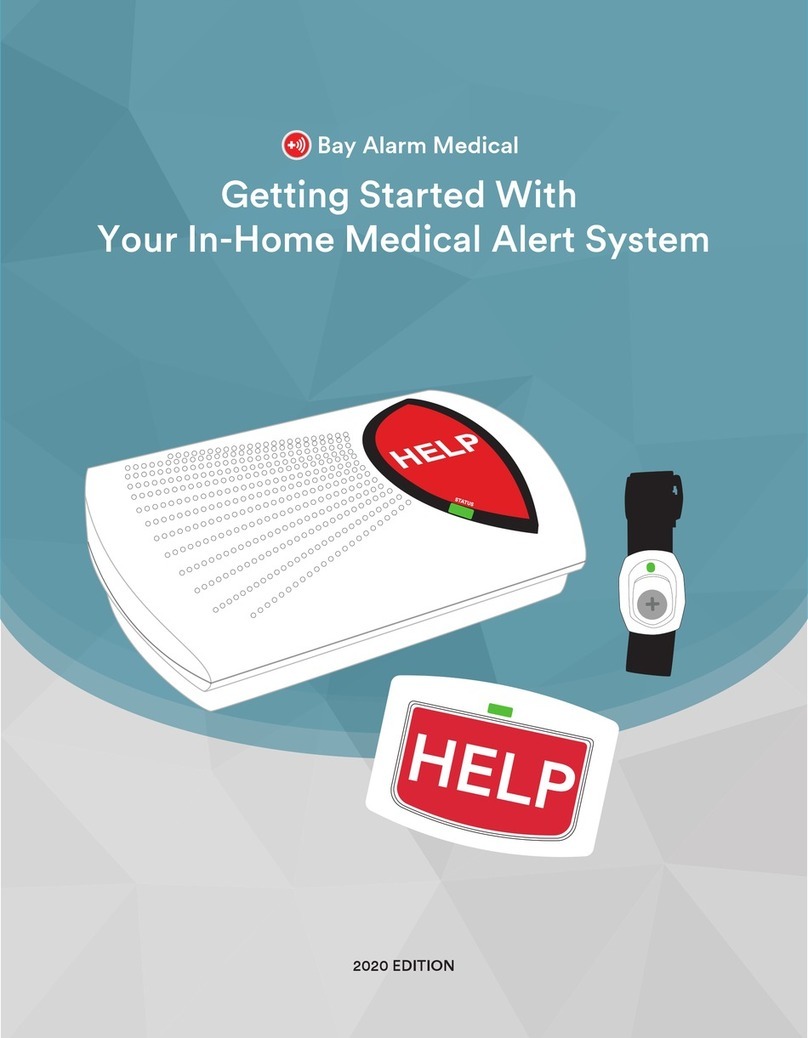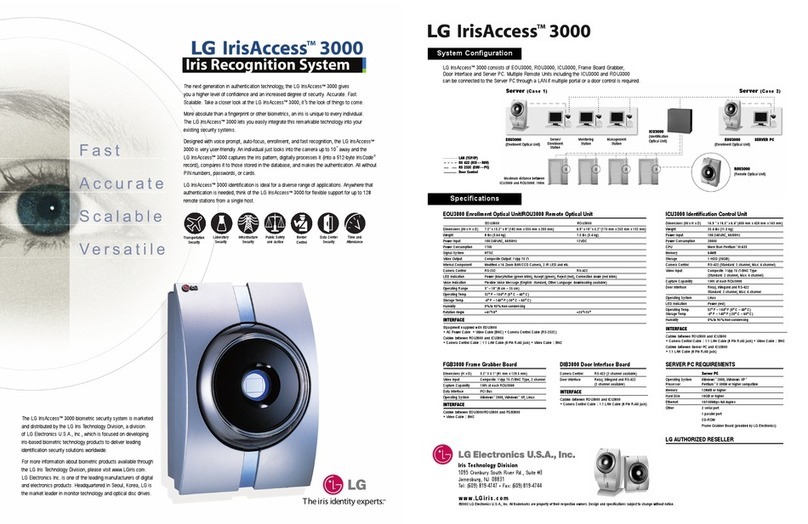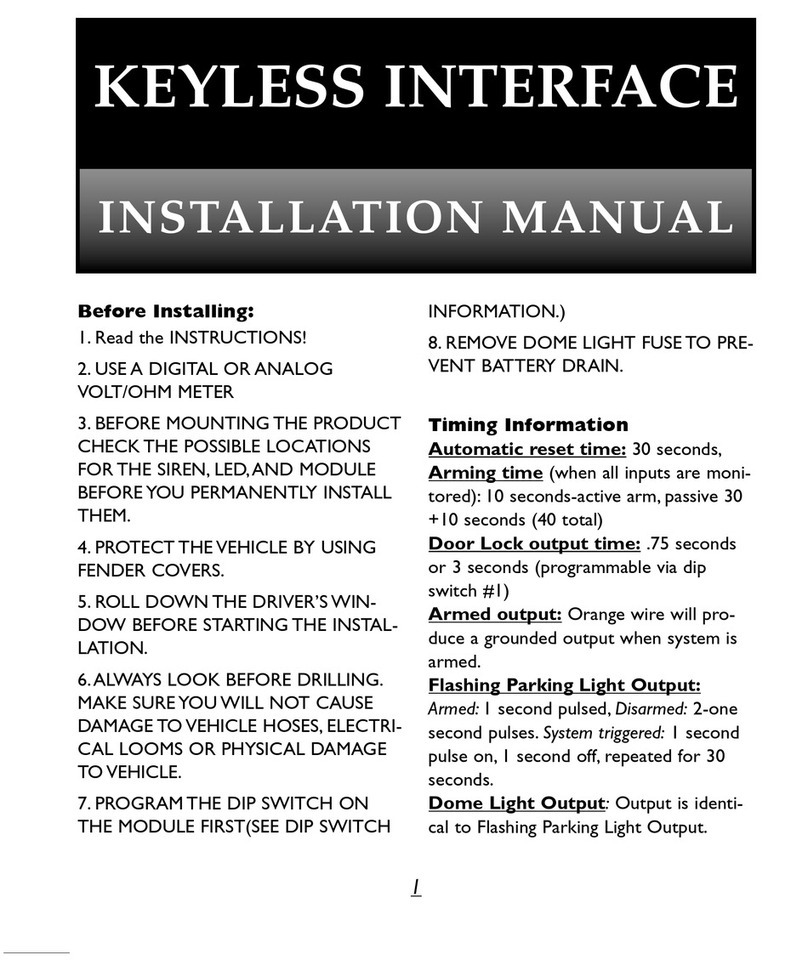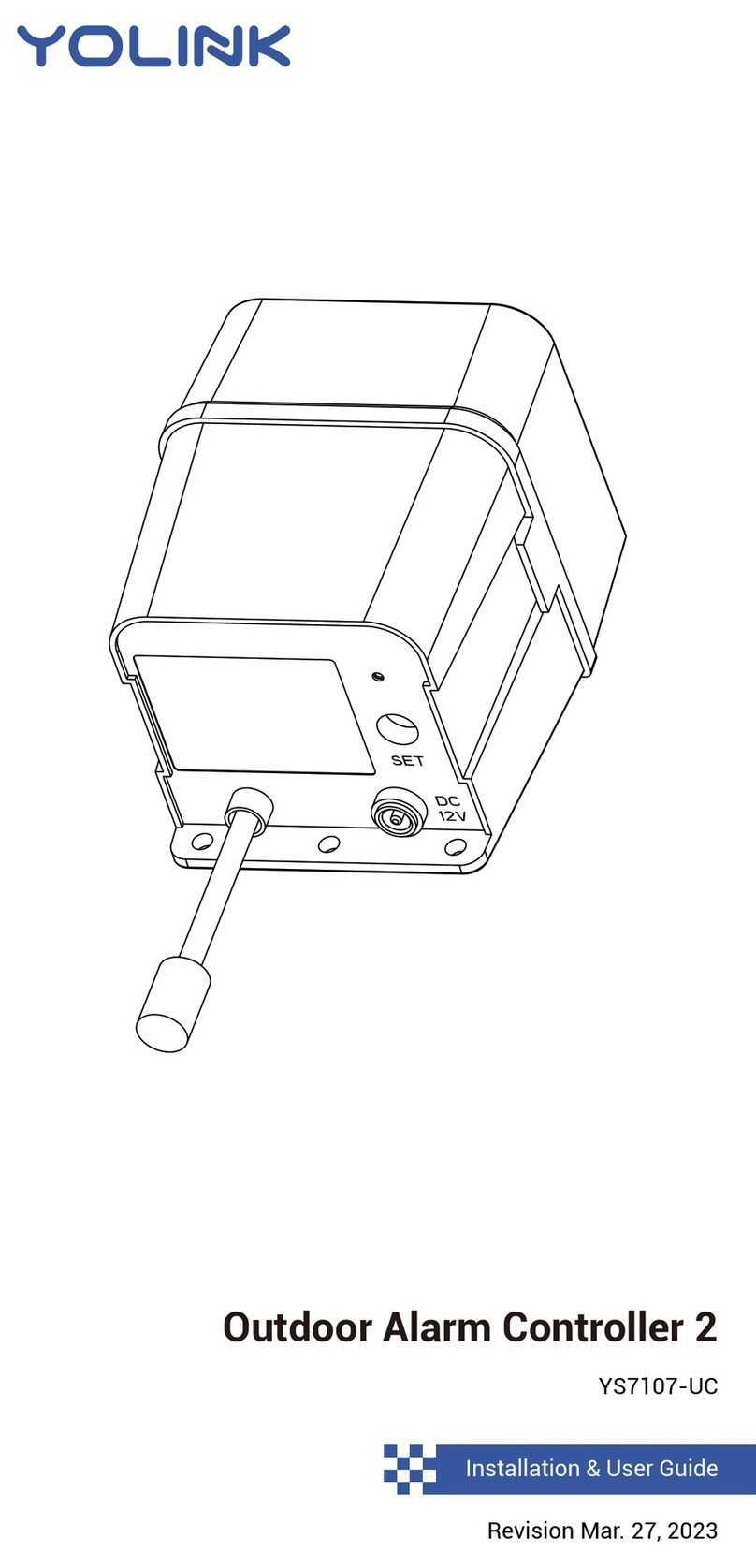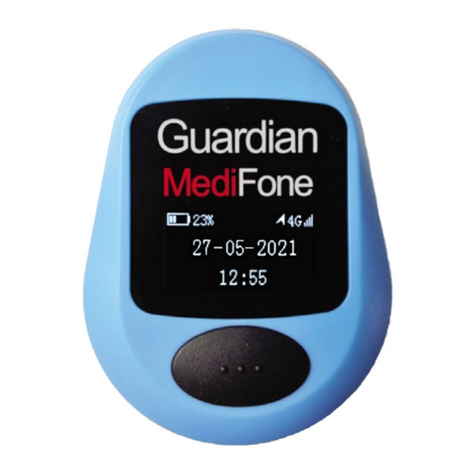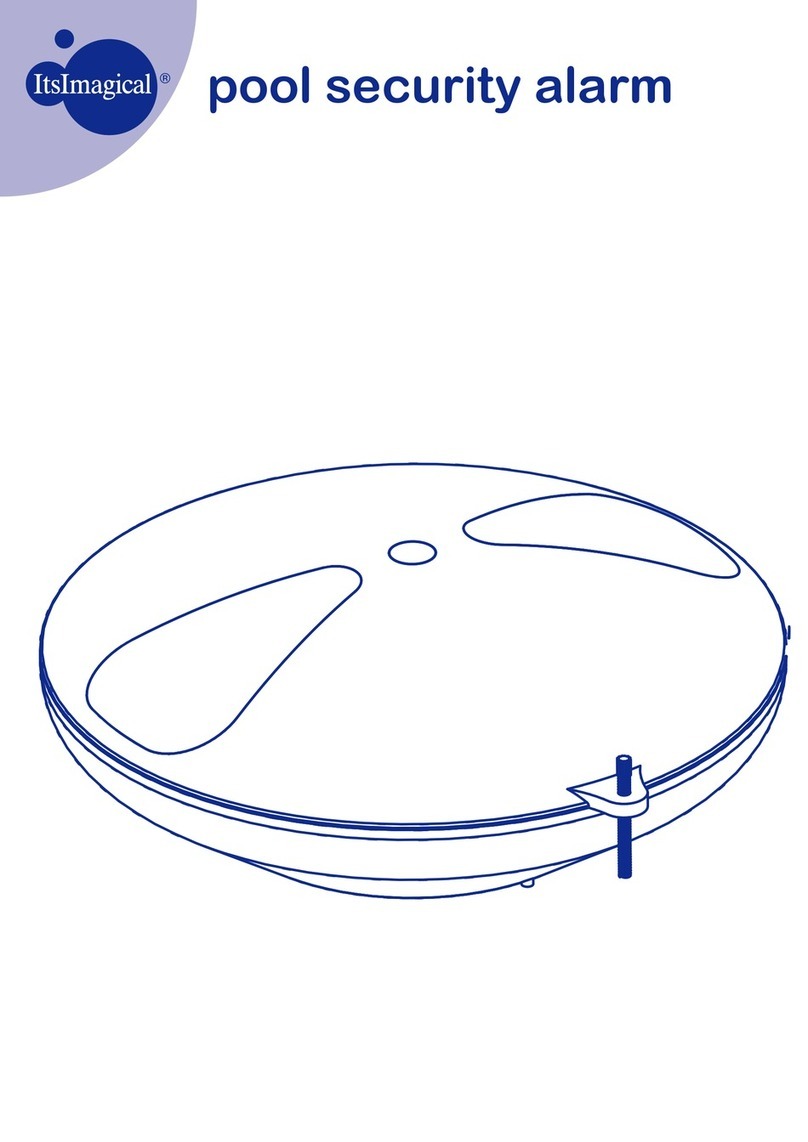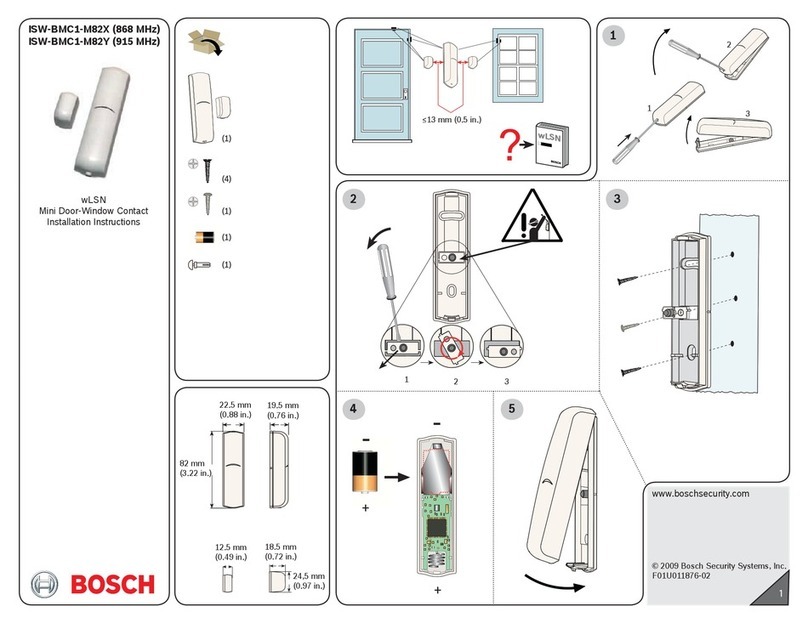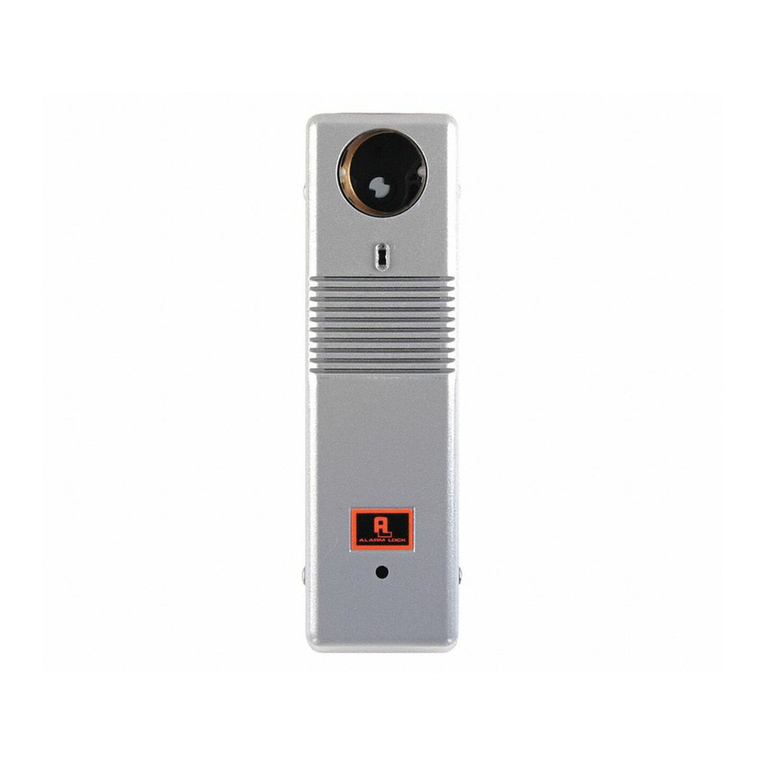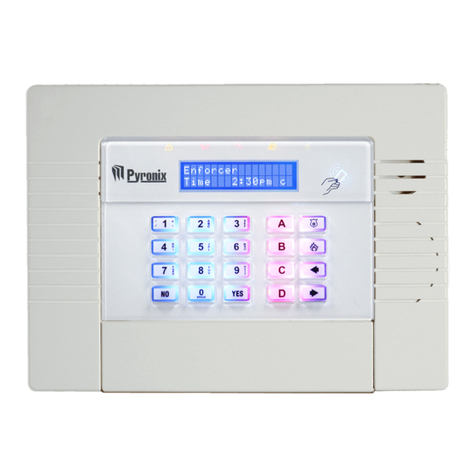Bay Alarm Vista-20Bay User manual

N7527-4V1 5/00 File No: S1632
9,67$%$<
6HFXULW\6\VWHP
8VHU*XLGH
I I I I I I
OFF AWAY STAY
MAX TEST BYPASS
INSTANT CODE CHIME
READY
PANIC
23
56
*
98
1
4
7
#0
SINCE1946
Liberty System
ARMED
BYPASS ACTIVEHEAT COOL
SINCE 1946

- 2 -

- 3 -
TABLE OF CONTENTS
System Overview...........................................4
General Information........................................4
Zones..............................................................4
Burglary Protection.........................................4
Security Codes...............................................5
Fire Protection................................................5
Alarms ............................................................5
Memory of Alarm............................................6
Phone Access & Voice Response Capability.6
Paging Feature...............................................6
Entry/Exit Delays...........................................7
General Information........................................7
Exit Alarms .....................................................8
About The Keypads.......................................9
General Information........................................9
2-Line Alpha Keypad......................................9
Fixed-Word Keypad........................................9
Fixed-Word Keypad Displays.........................10
Functions Of The Keypads...........................12
Checking For Open Zones............................15
Using the ✱Key .....................................15
Arming Perimeter Only (Entry Delay ON)....16
Using the 3 Key......................................16
Arming Perimeter Only (Entry Delay OFF)..17
Using the 7 Key......................................17
Arming All Protection (Entry Delay ON)......18
Using the 2 Key......................................18
Arming All Protection (Entry Delay OFF)....19
Using the 4 Key......................................19
Disarming and Silencing Alarms .................20
Using the 1 Key......................................20
Memory of Alarm............................................20
Bypassing Protection Zones........................22
Using the 6 Key.......................................22
Quick Bypass..................................................23
Displaying Bypassed Zones...........................23
Chime Mode...................................................24
Using the 9 Key......................................24
Panic Keys .....................................................25
Using Panic Keys ...........................................25
Types of Panic Alarms....................................25
Using Device Commands .............................26
General Information........................................26
Paging Feature...............................................27
General Information........................................27
Code Format...................................................27
Examples........................................................27
Using the Keyswitch .....................................28
General Information........................................28
Arming/ Disarming..........................................28
Security Codes ..............................................29
General Information........................................29
Babysitter Code..............................................29
Duress Code...................................................29
Quick Arming..................................................30
To Add a User or Change a User's Code.......30
To Delete a User ............................................31
Testing the System........................................32
Using the 5 Key.......................................32
Trouble Conditions........................................34
Typical “Check” Displays................................34
Fire Alarm System.........................................37
General Information........................................37
In Case Of Fire...............................................37
Recommendations for Proper Protection ...39
Recommendations for Smoke and Heat
Detectors........................................................39
Recommendations for Proper Intrusion
Protection .......................................................41
Emergency Evacuation.................................42
Maintaining Your System..............................43
Taking Care of Your System ..........................43
Replacing Batteries in Wireless Sensors........43
Routine Care ..................................................44
Quick Guide to System Functions...............45
Summary of Audible Notification.................46
Glossary.........................................................47
Index...............................................................54

- 4 -
System Overview
General Information
Congratulations on your ownership of a Bay Alarm Security System.
You've made a wise decision in choosing it, for it represents the latest
in security protection technology today.
This system offers you three forms of protection: burglary, fire and
emergency. Your system consists of at least one keypad that provides
control of system operation, and includes various sensors that provide
perimeter and interior burglary protection, plus smoke or combustion
detectors designed to provide early warning in case of fire.
The system uses microcomputer technology to monitor all protection
zones and system status, display appropriate information on the
keypad(s) used with the system, and initiate appropriate alarms.
Your system may also have been programmed to automatically send
alarm or status messages over the phone lines to a central alarm
monitoring station.
Zones
Your system's sensing devices have been assigned to various "zones."
For example, the sensing device on your Entry/Exit door may have
been assigned to zone 01, sensing devices on windows in the master
bedroom to zone 02, and so on. These numbers appear on the display,
along with a description for that zone (if programmed), when an
alarm or trouble condition occurs.
Burglary Protection
Your system provides four modes of burglary protection: STAY,
AWAY, INSTANT, and MAXIMUM, and allows you to BYPASS
selected zones while leaving the rest of the system armed. You must
turn on or "arm" the burglary protection portion of your system before
it senses burglary alarms. The system also provides a CHIME mode,
for alerting users to the opening of protected doors and windows while

System Overview
(cont’d)
- 5 -
the system is disarmed. Refer to the other sections of this manual for
procedures for using these features.
The following table lists the four different arming modes and the
features of each.
FEATURES FOR EACH ARMING MODE
ARMING
MODE Exit
Delay Entry
Delay Perimeter
Armed Interior
Armed
AWAY Yes Yes Yes Yes
STAY Yes Yes Yes No
INSTANT Yes No Yes No
MAXIMUM
Yes No Yes Yes
Security Codes
At the time of installation, you were assigned a personal four-digit
security code, known only to you. You must enter that 4-digit security
code when arming and disarming the system, and when performing
other system functions. As an additional safety feature, other users
who do not have a need to know your code can be assigned different
security codes. Refer to section titled, “Security Codes” for procedures
for adding security codes to the system.
Fire Protection
The fire protection portion of your security system (if used) is always
active and sounds an alarm if a fire condition is detected. Refer to
section titled, “Fire Alarm System” for important information
concerning fire protection, smoke detectors and planning emergency
exit routes from the premises.
Alarms
When an alarm occurs, both the keypad and external sounders sound,
with the keypad displaying the zone(s) causing the alarm. If your
system is connected to a central monitoring station, an alarm message
is also sent. To stop the alarm sounding, simply disarm the system.
Refer to section titled, “Disarming and Silencing Alarms.”

System Overview
(cont’d)
- 6 -
Memory of Alarm
When an alarm condition occurs, the keypad displays the number of
the zone that caused the problem, and the type of alarm (e.g. “FIRE,”
“ALARM”). It remains displayed until it is cleared by disarming the
system (see “Disarming and Silencing Alarms”).
Phone Access & Voice Response Capability
Your system may include a phone module that permits you to access
the system via a TouchTone telephone, either on-premises or by call-
in when away. The phone access feature enables you to do the
following:
•Receive synthesized voice messages over the telephone regarding
the status of the security system.
•Arm and disarm the system and perform most function commands
via the telephone, with voice confirmation provided after each
command entry.
Paging Feature
With the paging feature programmed for your system, your pager
responds to certain conditions as they occur in your system. Your
pager displays code numbers indicating the type of condition that has
occurred. Refer to section titled, “Paging Feature” for detailed
information.

- 7 -
Entry/Exit Delays
General Information
Your system has preset time delays, known as Exit Delay and Entry
Delay. Whenever you arm your system, Exit Delay gives you time to
leave through the designated exit door without setting off an alarm.
Exit Delay begins immediately after entering any arming command,
and applies to all modes of arming protection. If programmed, a slow
beeping will sound throughout the exit delay period.
Entry Delay gives you time to disarm the system when you re-enter
the premises through the designated entrance door. But you must
disarm the system before the entry delay period ends, or an alarm
occurs. The keypad beeps during the entry delay period, reminding
you to disarm the system. There are two entry delays (if
programmed). The first is for your primary entrance and the second
can be used for a secondary entrance, where a longer delay is required
to walk to the keypad to disarm the system.
You can also arm the system with no entry delay at all by using either
the INSTANT or MAXIMUM arming modes. This mode provides
greater security while on the premises.
See your installer for your delay times (you may want to record them
below).
Exit Delay:
seconds Entry Delay 1:
seconds
Entry Delay 2:
seconds

Entry/Exit Delays
(cont'd)
- 8 -
Exit Alarms
To minimize false alarms sent to the alarm monitoring company,
your system may have been programmed for this feature. Ask
your installer if Exit Alarm is active for your system.
Exit Alarm Active
Whenever you arm the system, the Exit Delay begins. If an entry/exit
door or interior zone is faulted when the Exit Delay ends (e.g., exit
door left open), the system sounds an alarm and starts the entry delay
timer. If you disarm the system before the entry delay ends, the alarm
sound stops and the message "CANCELED ALARM" or "CA" is
displayed on the keypad, along with a zone number indicating the
faulted zone. No message is sent to the alarm monitoring company.
To clear the exit alarm condition (the open zone must be closed before
the display can be cleared), enter your 4-digit security code plus OFF.
If you do not disarm the system before the entry delay ends, and an
entry/exit door or interior zone is still open, the alarm sound
continues and an "exit alarm" message is sent to the alarm
monitoring company. The message “EXIT ALARM” or “EA” is
displayed on the keypad, along with a zone number indicating the
faulted zone. To stop the alarm, the system must be disarmed using
your security code plus OFF key. To clear the display, enter your code
plus OFF a second time.
An exit alarm also results if an entry/exit door or interior zone is
faulted within 2 minutes after the end of the Exit Delay.

- 9 -
About The Keypads
IMPORTANT
If the keypad beeps rapidly upon entering the premises, it
indicates that an alarm has occurred during your absence and an
intruder may still be on the premises.
LEAVE IMMEDIATELY AND CONTACT THE POLICE from a
nearby safe location.
General Information
Your keypad allows you to control all system functions. Keypads
feature a telephone style (digital) keypad and a Liquid Crystal
Display (LCD) that shows the nature and location of all occurrences.
The keypad also features a built-in sounder that sounds during
alarms and troubles. The keypad also beeps during certain system
functions, such as during entry/exit delay times, in CHIME mode, and
when depressing any of the keys (to acknowledge the key press).
There are two basic types of keypads – a Fixed-Word keypad and an
Alpha keypad (both described below).
2-Line Alpha Keypad
2-line Alpha keypads feature a 2-line, 32-character alphanumeric
LCD that displays system messages in English. These keypads can
also be programmed with custom zone descriptors. The screen
displays depicted in this manual are those that typically
appear on a 2-line Alpha keypad.
Fixed-Word Keypad
Fixed-Word keypads are functionally identical to Alpha keypads, but
the LCD display uses pre-designated words to identify the nature and
location of occurrences.

About The Keypads
(cont'd)
- 10 -
Fixed-Word Keypad Displays
AWAY: All burglary zones, interior
and perimeter, are armed.
STAY: Perimeter burglary zones,
such as protected windows &
doors, are armed.
INSTANT: Perimeter burglary zones are
armed and entry delay is
turned off.
BYPASS: One or more burglary
protection zones have been
bypassed.
NOT READY: Appears when burglary portion of the system is not ready for
arming (due to open protection zones).
READY: The burglary system is ready to be armed.
NO AC: Appears when AC power has been cut off. System is operating
on backup battery power.
AC: Appears when AC power is present.
ARMED
READY
PANIC
OFF AWAY STAY
MAX TEST BYPASS
INSTANT CODE CHIME
READY
123
654
897
0
*
#
ALARM
CHECK
FIRE
AWAY
STAY
INSTANT
BYPASS
NO AC
CHIME
BAT
NOT READY
ARMED
SINCE1946
Liberty System
INSTANT
OFF AWAY STAY
MAX TEST BYPASS
CODE CHIME
READY
PANIC
00
ALARM
CHECK
FIRE
AWAY
STAY
INSTANT
BYPASS
NO AC
CHIME
BAT
NOT READY
FIXED-WORD
KEYPAD DISPLAY
6128
FIXED-WORD KEYPAD SK6139A-BAY
2-LINE ALPHA KEYPAD

About The Keypads
(cont'd)
- 11 -
CHIME: Appears when the Chime feature is activated.
BAT: Low battery condition in a wireless sensor (if zone number
displayed) or low system battery (if no zone number
displayed).
ALARM: Appears when an intrusion has been detected and the system
is armed (also appears during a fire alarm or audible
emergency alarm). Accompanied by the protection zone in
alarm.
CHECK: Appears when a malfunction is detected in the system at any
time; or if an open is detected in a FIRE zone at any time; or a
fault in a DAY/NIGHT burglary zone during a disarmed
period. Accompanied by a display of zone number in trouble.
FIRE: Appears when a fire alarm is present. Accompanied by a
display of the zone in alarm.

- 12 -
Functions Of The Keypads
ARMED
SINCE 1946
Liberty System
INSTANT
OFF AWAY STAY
MAX TEST BYPASS
CODE CHIME
READY
PANIC
14
16
3
2
5
14
15
6
7
9
10
12
11 13
8
TYPICAL ALPHA KEYPAD
Fixed-Word keypads are functionally similar, except for screen displays.
1. ALPHA DISPLAY WINDOW: A 2-
line Liquid Crystal Display (LCD).
Displays protection point identifica-
tion, system status, messages, and
user instructions.
2. OFF KEY: Disarms the burglary
portion of the system, silences
alarms and audible trouble
indicators, and clears displayed
alarm trouble after the problem has
been corrected.
3. AWAY KEY: Completely arms
both perimeter and interior
burglary zones for backup
protection by sensing an intruder's
movements through protected
interior areas as well as guarding
protected doors, windows, etc.
Entrance can be made through an
entry delay zone without causing an
alarm if the system is disarmed
before the entry delay time expires.
A
B
C

Functions Of The Keypads
(cont'd
)
- 13 -
4. STAY KEY: Arms the perimeter
burglary sensors, guarding
protected doors, windows and other
perimeter protection points, and
sounds an alarm if one is opened.
Interior protection is not armed,
which allows movement within your
house without causing an alarm.
Entrance can be made through an
entry delay zone without causing an
alarm if the system is disarmed
before the entry delay time expires.
5. MAX KEY: Arms in manner
similar to AWAY mode, but
eliminates the entry delay period,
thus providing maximum
protection. An alarm occurs
immediately upon opening any
protection point, including entry
delay zones.
6. TEST KEY: Tests the system and
alarm sounder.
7. BYPASS KEY: Removes
individual protection zones from
being monitored by the system.
Displays currently bypassed
protection zones.
8. INSTANT KEY: Arms in manner
similar to STAY mode, but turns off
the entry delay period, offering
greater security while inside and
not expecting any late arrivals. An
alarm occurs immediately upon
opening any perimeter protection
point, including entry delay zones.
9. CODE KEY: Allows the entry of
additional user codes that can be
given to other users of the system.
10. CHIME KEY: Turns the CHIME
mode on and off. When on, any
entry through a protected delay or
perimeter zone while the system is
disarmed causes a tone to sound at
the keypad(s).
11. READY KEY: When depressed
prior to arming the system, the
keypad displays any open protection
zones monitored by the system.
12. # KEY: Permits arming of the
system without use of a security
code (“Quick Arm,” if programmed).
13. KEYS 0-9: Used to enter your
individual security access code(s).
14. ARMED INDICATOR: (RED) Lit
when the system has been armed in
the STAY, AWAY, INSTANT, or
MAXIMUM mode.

Functions Of The Keypads
(cont'd)
- 14 -
15. INTERNAL SOUNDER: Source of
audible internal warning and
confirmation sounds, as well as
alarms (see "Summary of Audible
Notifications").
16. PANIC KEYS: Some keypads use
key pairs to activate panic alarms,
rather than individual keys. Refer
To Panic Keys for descriptions of
these keys.
IMPORTANT!
When you use the keypad to enter codes and
commands, press the keys within 2 seconds of
one another. If 2 seconds elapse without a key
depression, the entry is aborted and must be
repeated from its beginning.

- 15 -
Checking For Open Zones
Using the ✱Key
Before arming your system, all protected doors, windows and other
protection zones must be closed or bypassed (see “Bypassing
Protection Zones”). Otherwise the keypad displays a “NOT READY”
message. Using the [✱]key displays all zones that are faulted,
making it easier for you to secure any open zones.
NOTE: A green READY indicator (if present) on the keypad is lit if
the system is ready to be armed. If not lit, the system is not
ready.
NOT READY - PRESS ✱
TO SHOW FAULTS
To show faulted zones:
1.
✱Press The [✱] Key
Do not enter security code, but simply
press the [✱]key.
2.
FAULT 05 FRONT
UPSTAIRS BEDROOM Secure Faulted Zones
Typical fault display shows open zones.
Secure or bypass the zones displayed
before arming the system.
3.
✱✱✱✱DISARMED✱✱✱✱
READY TO ARM System Can Be Armed
The “READY” message is displayed when
all protection zones have been either
closed or bypassed.
You may now arm the system as usual.

- 16 -
Arming Perimeter Only
(Entry Delay ON)
Using the 3 Key
STAY
Use this key when you are staying home, but might expect someone to
use the entrance door later.
When armed in STAY mode, the system sounds an alarm if a
protected door or window is opened, but you may otherwise move
freely throughout the premises. Late arrivals can enter through the
entrance door without causing an alarm, but they must disarm the
system within the entry delay period or an alarm occurs.
Close all protected perimeter windows and doors before
arming (see “Checking for Open Zones”). The green READY
indicator (if present) on the keypad should be lit if the system is ready
to be armed.
1.
+ 3
(Security Code) STAY
Enter Security Code, Then Press
STAY
Example: 7 2 9 6 then press the
STAY key
or for quick arming
(if enabled) Press the “#” key followed by the
“STAY” Key
2.
ARMED ✱✱✱STAY✱✱✱
You may exit now Listen For 3 Beeps
The keypad beeps three times and
displays the “ARMED STAY” message.
The “You may exit now” message
disappears at the end of the exit delay
time. The red ARMED indicator also
lights.
You can restart the exit delay at any time after arming in STAY mode
by pressing the ✴key. This is useful if you wish to open the
entry/exit door to let someone in after arming the system and avoids
having to disarm the system and then re-arm it again.

- 17 -
Arming Perimeter Only
(Entry Delay OFF)
Using the 7 Key
INSTANT
Use this key when you are staying home and do not expect anyone to
use the entrance door.
When armed in INSTANT mode, the system sounds an alarm if a
protected door or window is opened, but you may otherwise move
freely throughout the premises. The alarm also sounds immediately if
anyone opens the entrance door. Close all protected perimeter
windows and doors before arming (See “Checking for Open
Zones”). The green READY indicator (if present) on the keypad
should be lit if the system is ready to be armed.
1.
+ 7
(Security Code) INSTANT
Enter Security Code, Then Press
INSTANT
Example: 7 2 9 6 then press the
INSTANT
or for quick arming
(if enabled) Press the “#” key followed by the
“INSTANT” Key
2.
ARMED ✱INSTANT✱
You may exit now Listen For 3 Beeps
The keypad beeps three times and
displays the “ARMED INSTANT”
message. The “You may exit now”
message disappears at the end of the exit
delay time. The red ARMED indicator
also lights.
You can restart the exit delay at any time after arming in INSTANT
mode by pressing the ✴key. This is useful if you wish to open the
entry/exit door to let someone in after arming the system and avoids
having to disarm the system and then re-arm it again.

- 18 -
Arming All Protection
(Entry Delay ON)
Using the 2 Key
AWAY
Use this key when no one is staying in the premises.
When armed in AWAY mode, the system sounds an alarm if a
protected door or window is opened, or if any movement is detected
inside the premises. You may leave through the entrance door during
the exit delay period without causing an alarm. You may also re-enter
through the entrance door, but must disarm the system within the
entry delay period or an alarm occurs.
Close all protected perimeter windows and doors before
arming (see “Checking for Open Zones”). The green READY
indicator (if present) on the keypad should be lit if the system is ready
to be armed.
1.
+ 2
(Security Code) AWAY
Enter security code, then press AWAY
Example: 7 2 9 6 then press the
AWAY key
or for quick arming
(if enabled) Press the “#” key followed by the
“AWAY” Key
2.
ARMED ✱✱✱AWAY✱✱✱
You may exit now Listen
The keypad beeps twice, or beeps
continuously if exit warning has been
programmed for your system, and
displays the “ARMED AWAY” message.
The red ARMED indicator also lights.
The “YOU MAY EXIT NOW” portion of
the message disappears when the exit
delay expires.

- 19 -
Arming All Protection
(Entry Delay OFF)
Using the 4 Key
MAXIMUM
Use this key when the premises is vacant for extended periods of time
such as during vacation periods, long weekends, etc., or when no one
is expected to be moving through protected interior areas.
When armed in MAXIMUM mode, the system sounds an alarm if a
protected door or window is opened, or if any movement is detected
inside the premises. You may leave through the entrance door during
the exit delay period without causing an alarm, but an alarm is
sounded as soon as someone re-enters.
Close all protected perimeter windows and doors before
arming
(see “Checking for Open Zones”). The green READY indicator
(if present) on the keypad is lit if the system is ready to be armed.
1.
+ 4
(Security Code) MAXIMUM
Enter Security Code, Then Press
MAXIMUM
Example: 7 2 9 6 then press the
MAXIMUM key
or for quick arming
(if enabled) Press the “#” key followed by the
“MAXIMUM” Key
2.
ARMED ✱MAXIMUM✱
You may exit now Listen
The keypad beeps twice, or beeps
continuously if exit warning has been
programmed for your system, and
displays the “ARMED MAXIMUM”
message (“AWAY/INSTANT” on fixed-
word keypads). The red ARMED indicator
also lights.
The “YOU MAY EXIT NOW” portion of
the message disappears when the exit
delay expires.

- 20 -
Disarming and Silencing Alarms
Using the 1 Key
OFF
Use the OFF key to disarm the system and to silence alarm and
trouble sounds. See “Summary of Audible Notification” for
information that helps you to distinguish between fire and burglary
alarm sounds.
IMPORTANT: If you return and the main burglary
sounder is on, DO NOT enter the premises, but call the
police from a nearby safe location. If you return after an
alarm has occurred and the main sounder has shut
itself off, the keypad beeps rapidly upon entering,
indicating that an alarm has occurred during your
absence and an intruder may still be on the premises.
LEAVE IMMEDIATELY and CONTACT THE
POLICE from a nearby safe location.
To disarm the system and silence burglary alarms:
1.
+ 1
(Security Code) OFF
Enter Security Code, Then Press OFF
Example: 7 2 9 6 then press the
OFF key
2.
✱✱✱✱DISARMED✱✱✱✱
READY TO ARM Listen For 1 Beep
The “READY” message is displayed (if no
alarms have occurred while armed) and
the keypad beeps once to confirm that the
system is disarmed.
Memory of Alarm
If an alarm occurs, the keypad displays the zone number(s) that
caused the alarm and the type of alarm. These messages remain
displayed until cleared by a user.
Other manuals for Vista-20Bay
1
Table of contents
Other Bay Alarm Security System manuals
Popular Security System manuals by other brands

Electronic Devices Limited
Electronic Devices Limited ED816A instruction manual
DS
DS DS-Beacon-06 user manual
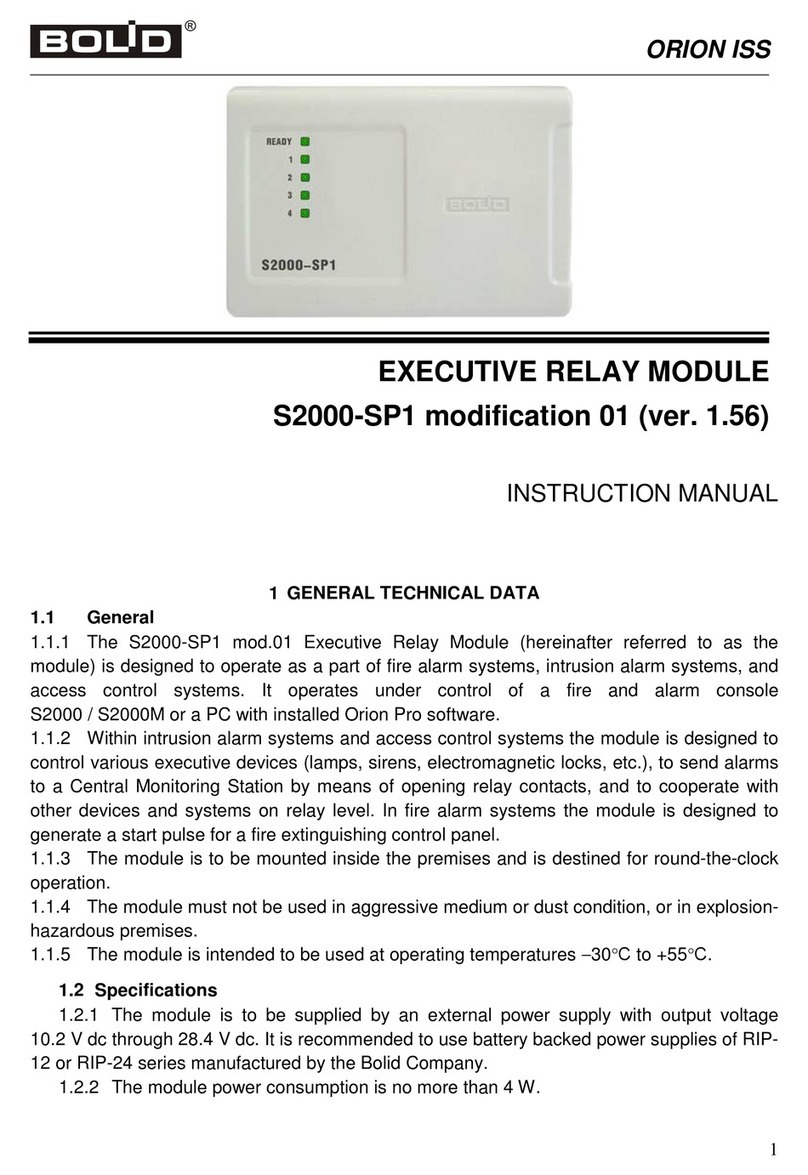
bolid
bolid S2000-SP1 ORION ISS instruction manual
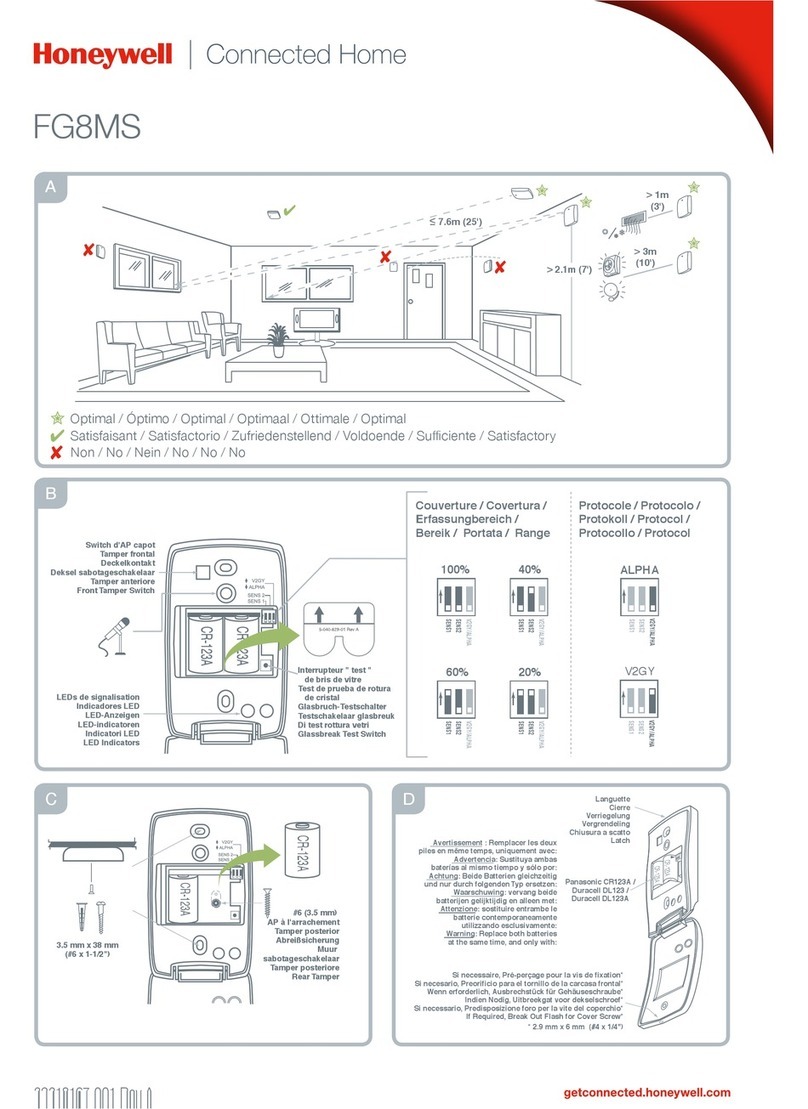
Honeywell
Honeywell FG8MS installation instructions
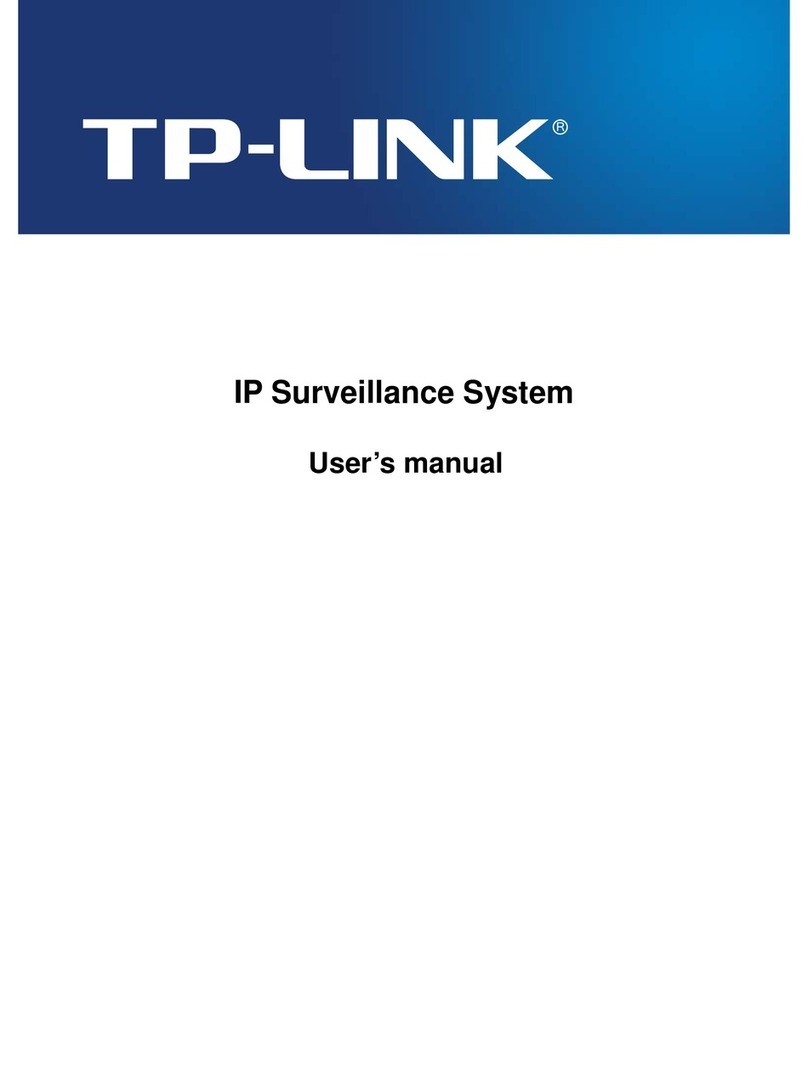
TP-Link
TP-Link TL-SC3130G user manual
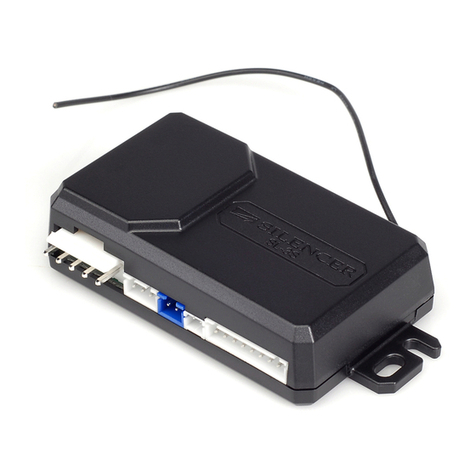
Silencer Security Systems
Silencer Security Systems SL-3S Quick start installation manual

